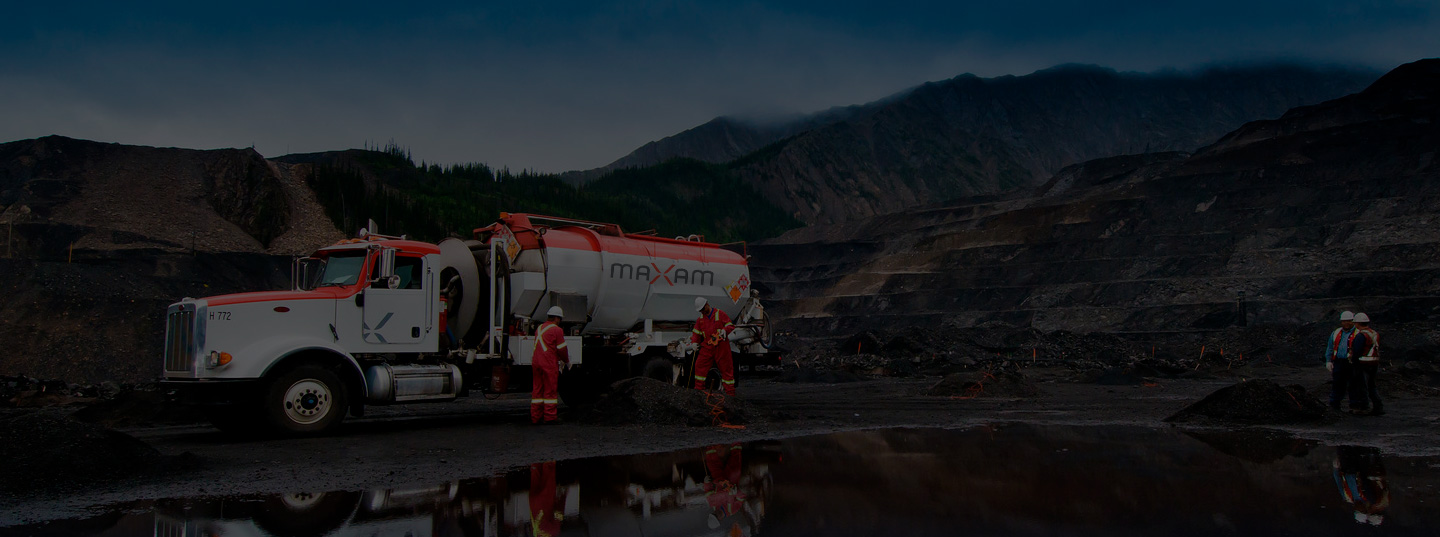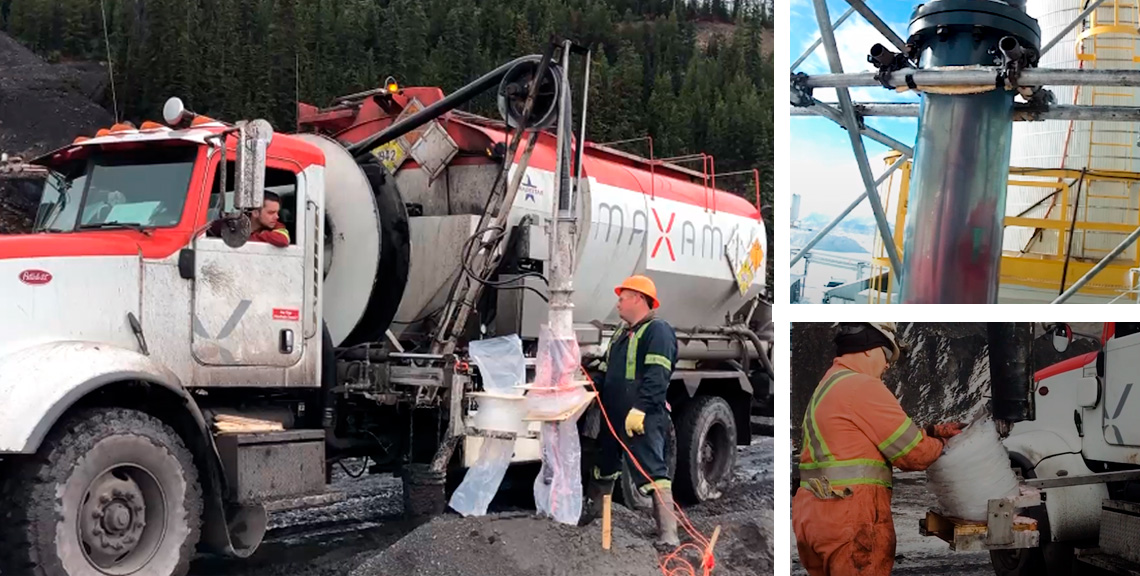
Better together: how co-creation allowed to reduce nitrate leaching at Canadian Teck Resources’ operations
Mining companies are investing more and more in sustainable practices to reduce their environmental impact, and one of their main concerns is nitrate leaching. Nitrate is a by-product of the blasting process and can have negative effects in the water in high concentrations.
This was indeed a major issue for Teck Resources, one of the main Canadian miners, in its operations at Elk Valley. Partnering with our customer, we were able to find a solution together to prevent nitrate leaching by adapting our loading units (MSU) with liners used in wet blastholes since May 2019.
November 2019
The initiatives to prevent leaching started back in 2015 by understanding the mechanisms of nitrate release and how could we solve it. In order to test the use of the liners, we partnered with Teck to investigate how could we do it effectively, efficiently and, above all, safely.
Since then, both companies worked together to adapt our Mobile Sensitizing Units (MSU) or loading units for loading blastholes with liners. During 2018 Teck and MAXAM carried out several tests using our facilities and part of our equipment, as the only way to prove this project was safe was to simulate the process in a real scale.
In dewatered blastholes, loading emulsion in liners was not an issue. The problem began when, after dewatering the hole, the dynamic water still appeared in the blasthole. Due to the hydraulic pressure of the water at the bottom of the blasthole, liner and hose were getting stuck together while being lifted and were rising the primers as well. In order to reduce this friction, mineral oil was introduced in between the hose and the liner manually. .
The results were positive, and the next step was the Clear Tube Testing. This consisted on building a 19m clear tube in Elk View’s site and the idea was to simulate what occurs inside a blasthole. In the first place, straight emulsion was loaded into the clear tube to verify how it would behave. Then we used inert downlines to see how they behaved with the liners and the product. This test was very positive to understand the hydraulic pressure down the blastholes.
In 2019 Teck and MAXAM started to deploy this innovative solution in Fording River and Greenhills Operations, adding several new devices to our MSU: .
1. Oiler lubricating system installed on the truck using stainless steel arms connected to the hose reel.
2. Panel control screen (EC Panel inside the MSU truck) which controls the hose and the oiler encoder.
3. A liner platform controlled with a hydraulic arm. 4. A diffuser at the bottom of the hose to assure a correct blend of the product loaded to the blasthole.

This was not an easy process, since our fleet operating with Teck differs considerably between the sites in the type, size and design. Also, time was a major concern. Today, the conversion process lasts between two to three weeks, which has an impact on the operation’s productivity.
In addition to reducing leaching, this solution also brought additional benefits such as avoiding contamination at the bottom of the blasthole since the liner protects also the booster. .On the other hand, it allows a better use of our explosives. The liner protects it from water and avoids filtration through cracks.
Of course, like all changes, there were many questions from blasters at the beginning, especially regarding safety. Once it was explained, addressed and we prove in the field that the process functioned as expected, they were quite impressed. The modifications are positive as it allows both operators and blasters to know where the hose is and have a better control of the hose reel.
In my belief, the more people that actually start to try and do this could get a much better system. We all have an environmental concern and it is a potential solution. We have gone from experimenting in a bathtub to receiving the contribution of many people to make this happen. To me, the benefit is not only the process but all those people actually working together. JEFF HAWLEY. TECK SENIOR ENGINEER SUPERVISOR, BUSINESS IMPROVEMENT
Today’s mining operations present many challenges in terms of productivity, efficiency, and sustainability and our experience has shown that the best answer to these challenges is co-creation, developing tailor-made solutions to specific problems.
-
Proud winners of the Mining Magazine Awards 2019
-
See the full story:
This was not an easy process, since our fleet operating with Teck differs considerably between the sites in the type, size and design. Also, time was a major concern. Today, the conversion process lasts between two to three weeks, which has an impact on the operation’s productivity.
In addition to reducing leaching, this solution also brought additional benefits such as avoiding contamination at the bottom of the blasthole since the liner protects also the booster. .On the other hand, it allows a better use of our explosives. The liner protects it from water and avoids filtration through cracks.
Of course, like all changes, there were many questions from blasters at the beginning, especially regarding safety. Once it was explained, addressed and we prove in the field that the process functioned as expected, they were quite impressed. The modifications are positive as it allows both operators and blasters to know where the hose is and have a better control of the hose reel.
In my belief, the more people that actually start to try and do this could get a much better system. We all have an environmental concern and it is a potential solution. We have gone from experimenting in a bathtub to receiving the contribution of many people to make this happen. To me, the benefit is not only the process but all those people actually working together. JEFF HAWLEY. TECK SENIOR ENGINEER SUPERVISOR, BUSINESS IMPROVEMENT
Today’s mining operations present many challenges in terms of productivity, efficiency, and sustainability and our experience has shown that the best answer to these challenges is co-creation, developing tailor-made solutions to specific problems.
-
Proud winners of the Mining Magazine Awards 2019
-
See the full story:





